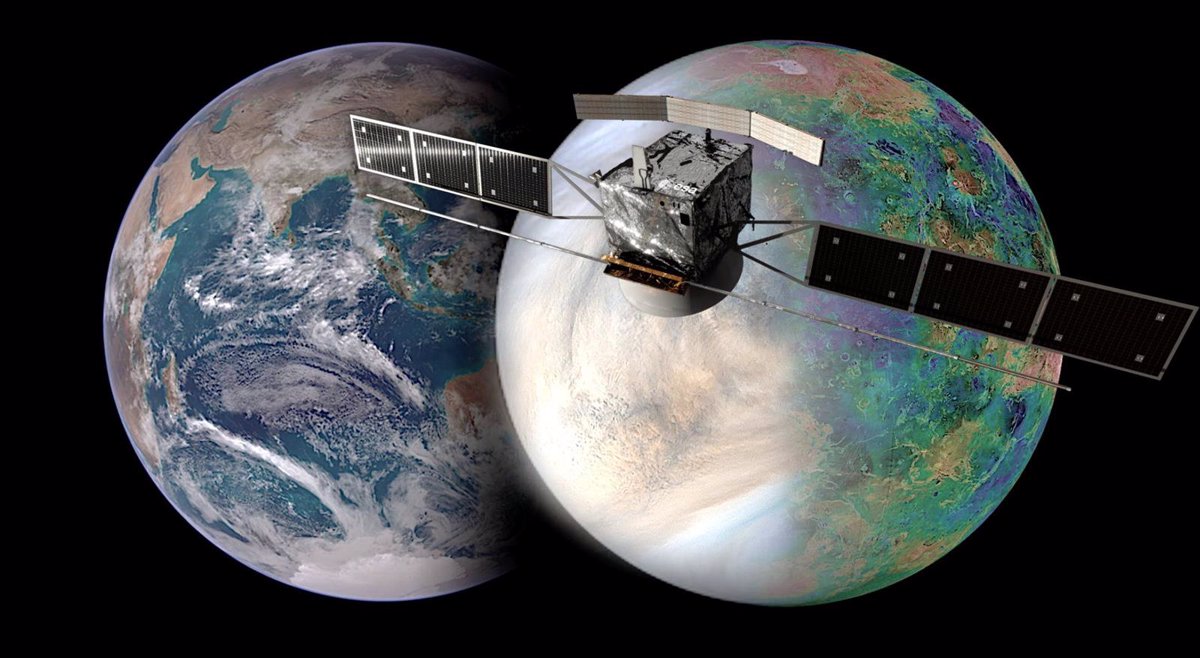The Institute of Astrophysics of Andalusia is involved in the construction of equipment for the EnVision mission to Venus

SEVILLE, February 6. (EUROPE PRESS) –
The European Space Agency (ESA) last week approved the construction and development of EnVision, a space mission that aims to answer currently open questions about the planet Venus. The Institute of Astrophysics of Andalusia (IAA-CSIC) is taking a “significant” part in one of the mission’s four main instruments. Later this year, the project will select a European industrial contractor to begin construction work on the instruments and spacecraft.
The mission will study Venus from its inner core to its upper atmosphere and provide “fundamental” data on its volcanic activity and climate, key aspects to understanding how and when the planet, thought to be Earth’s twin, became so inhospitable. EnVision is scheduled to launch in 2031 on an Ariane 6 rocket, with scientific operations to begin in early 2035, the Supreme Council for Scientific Research (CSIC) said in a press release.
The contribution of the Institute of Astrophysics of Andalusia (IAA-CSIC) to the EnVision mission focuses on the VenSpec instrument, a set consisting of three spectrometers (U, H and M) for observations at wavelengths from visible to near-infrared. In particular, VenSpec-U will allow us to analyze the planet’s atmosphere above its cloud layer, and VenSpec-H, a high-resolution spectrograph, will measure the layers of the atmosphere closest to the planet’s surface, both possible volcanic gases and their variability, such as aerosols. which make up the clouds of Venus. Finally, VenSpec-M will be able to estimate the thermal radiation and spectral properties of the planet’s own surface.
“It is impossible to understand the surface of Venus without also understanding its atmosphere. VenSpec will allow us to establish this relationship well,” explains researcher Louise Lara. “For example, VenSpec-M will be able to detect an active volcanic eruption on the surface of Venus by detecting hot lava, while VenSpec-H simultaneously determines the amount of water vapor released by the volcano to the surface, and VenSpec-U records the distribution of sulfur dioxide in the upper atmosphere as a sign of this volcanic eruption,” he details. The entire VenSpec package is managed and coordinated by the DLR Institute for Planetary Science (German Aerospace Center) in Berlin.
IAA-CSIC contributes to both technological development and scientific return of the mission by being responsible for the VenSpec-U and VenSpec-H power module; as well as the design and development of a central control unit (CCU) for three channels (U, N and M). The IAA-CSIC technical team responsible for technological development includes Fernando Alvarez, José M. Castro, Fernando Guirela, Jaime Jimenez, Ignacio Martin-Navajas and Alvaro Mazuecos.
The preparation and scientific return of the IAA-CSIC mission falls on researchers Gabriella Gilli and Louise M. Lara, as well as researcher Aurelien Stolzenbach. The Spanish contribution is completed by the participation of collaborators from the University of the Basque Country in the scientific groups VenSpec U and H. “With EnVision, a new and promising phase opens in the study of Venus, whose atmosphere is a natural laboratory. to better understand the greenhouse effect and how our planet may develop in the future,” says Gabriella Gilley.
Despite being the first planet visited by a space probe in the 1960s, Venus remains one of the most open-questioned planets in the entire solar system. One of these major questions is to understand how this planet evolved so that, despite being formed under conditions similar to Earth’s, it evolved in such a radically different way.
“When we talk about Venus, there are more open questions than answers. We do not know how the planet’s surface and interior evolved, whether Venus is geologically and tectonically active, or whether it has been active within the last billion years. years, how it formed its atmosphere and how its climate evolved through geological processes,” says Louise Lara, principal investigator for IAA-CSIC’s participation in the mission.
“Understanding what happened to Venus during its evolution to become the inhospitable planet it is today is just one of EnVision’s scientific goals,” says Gabriella Gilley, a researcher at IAA-CSIC. Although the atmosphere of Venus, with its clouds of sulfuric acid impenetrable to visible light, does not allow direct viewing of the planet’s surface, there are indirect methods for studying it.
This is achieved on the one hand by radar penetrating clouds, as airplanes do on Earth, and on the other by using specific wavelengths, especially in the near-infrared, by observing through so-called atmospheric windows. To achieve this goal, the ESA mission, in collaboration with NASA, will carry six instruments that will probe from the inner core to the surface and the atmosphere above the cloud layer at an altitude of almost 100 kilometers.
